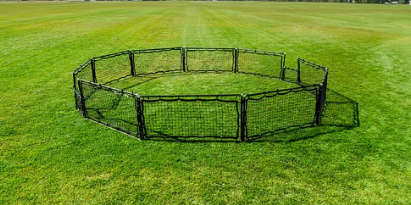
There are a lot of different instances you might want to use an icebreaker game with a group of teens. Maybe you’re a PE teacher at a High school, and want a way to get your group of students more comfortable. Maybe you run a youth camp and want your group of teens to start thinking creatively. Or maybe you’re putting on a church youth activity and want the kids to feel comfortable sharing their feelings. The list could obviously go on and on, athletic teams, school clubs, first days… Any circumstance where you have a group of teenagers could call for one of these activities. But before we jump into the actual activities, we should go over a few things that will help you make them successful.

THINGS TO KEEP IN MIND
What is an icebreaker activity?
The point of an icebreaker activity is to make all members of the group comfortable with each other. Sometimes, when teens are put in a group, especially when they’re unfamiliar with each other, they tend to stick to themselves or people they already know.
For these types of group activities to be successful, these walls have to be broken. You have to break the ice. That’s what the initial icebreaker activity is for.
What is the goal?
What is the point of your icebreaker activity? In order to have a truly successful activity, you have to have a goal in mind. Once the activity is over, what do you want to be different about how the group interacts? Here are some ideas:
- Each group member will know all of the names of the rest of the group.
- Each group member will feel comfortable making mistakes or trying something new.
- Each group member is enjoying themselves and is primed to enjoy the rest of the activity.
If you know what end result you want to have, you’ll be better able to tailor the activity or game to drive that result. This type of strategic thinking will improve the activity’s odds for success.
Tailoring the activity for teens
Creating an activity for teens can be much more difficult than creating an activity for kids or full-fledged adults. Younger kids will likely play along because you’re an adult telling them what to do. Adults play along because it’s polite, even if they’re not thrilled about it. Teens on the other hand won’t give you the time of day if they’re not buying into this activity. To be successful with teens, you have to create an environment and an attitude of fun and engagement. Here are a few tips to manage that.
- Don’t be too cheesy or childish: The last thing you want from your group of teens is to see a bunch of eye rolls. If your group feels like you’re treating them like kids, you’ve lost them. Engage with them like equals and they’re more likely to engage in the activity.
- Have an activity with a goal: Having an activity without a goal or purpose is a great way to loose teens’ attention. By giving them a goal and a time-limit, the competitive spirit will likely surface in some participants and bring the rest of the group with them.
- Be flexible: Plan on the activity not going exactly according to plan. When this happens, remember that your game is not the end in itself, breaking the ice is. If the teenagers break the ice by bending the game, that’s fine.
- Put a “leader” in each team: Be strategic when you put teams together. If the group generally seems pretty engaged, it doesn’t matter as much. However, if you have a low-energy group, try to split up the higher-energy, outgoing, liked teens so they can add some excitement to their own teams.
- Competition: Friendly competition can do wonders for engagement. There will always be those who don’t care, but the prospect of winning a prize can do wonders for teen engagement.
What is the setting?
The setting matters a lot when selecting your activity, and there’s a lot that goes into your setting. Here are a few questions to ask.
How “forced” are the teens to be there? If they are required to be there whether they like it or not. (a school PE class for example) it may be harder to get the teens engaged. If however, they all chose to be there and want to be there, engagement should be a lot easier.
How well do the teens know each other? The better participants know each other, the higher the energy will be, but keeping attention and focus could be harder.
How long should an icebreaker activity last? There’s definitely a balance here. The activity should be long enough for you to meet the goal or purpose of the icebreaker activity and not much longer than that. If the teens start to get bored with the icebreaker activity, you basically have to start over when you get to the meat of the overarching activity.
LIST OF ICEBREAKERS FOR TEENS
Finally, here’s your list of icebreakers.
Active Icebreaker Activities
One note on active games. For these games, it doesn’t matter how physically fit or athletic you are. These are just games that require some movement and coordination. This builds an additional fun element into your game.
- 9-square: 9-square is a fun game that’s reminiscent of the classic game, 4-Square. You could say it’s like a mix between volleyball and foursquare. Basically, instead of bouncing a ball into opponents square on the ground, you have a frame divided into squares raised 6-8 feet in the air. Players bounce a ball out of their square and into the other players’ squares without dropping it. This is a fun game because, like 4-square, it’s more about the fun of playing than winning, and you don’t have to be an athlete to enjoy it. You can also add a getting-to-know-you element to the game by requiring players to say the name of the person whose square they hit the ball into.

- Balloon stomp: The goal of this game is to be the last player with an un popped balloon on their ankle. All you need to play is a balloon and 3-foot length of ribbon for each participant. Have each player fill their own balloon, and tie it to their ankle. Then define boundaries for the field of play and let them loose. Keep in mind that it is easier to win if your ribbon is shorter and your balloon is smaller, so consider making rules around these points to make the game a bit more fair.

- Indoor snowball fight: Snowball fights are fun, but they have their downsides. You need snow, you need to be outside in the snow, and injuries are almost inevitable. Fortunately there’s a way to get most of the fun out of a good old-fashioned snowball fight without these drawbacks. To play, give 3-5 sheets of paper to each participant and have them crumple them up into a ball, then have a snowball fight! To make things more interesting, you can split up teams, set boundaries or creative rules, or make it a dodgeball-type activity.

- Relay races: There’s something about the simplicity of racing another player or team that is naturally captivating, and there are limitless ways to do it! Here are a few options to get your wheels turning.
-
The egg race: Each player should have their own spoon and each team should have a few eggs — It’s good to have a few backups in case one gets dropped). Racers hold a spoon in their mouth and place an egg in it (raw or hard boiled is fine, it just depends on your risk aversion) Set up a starting line and turnaround point. Once the first racer returns from running their leg of the race, hand off the egg to the next person in line. The first team who gets all their teammates to complete the race wins.

- 3-legged race: This is a classic, I don’t think an explanation is necessary.
- Funny clothing: Gather a variety of overly large and odd clothing (Big boots, hats, scarves, gloves…) Each team should have a similar pile of clothing in front of them, 2 buckets (One full of water, the other empty), and a cup. Players on each team should take turns donning the clothing, filling the cup with the full water bucket, running to the other bucket and dumping the water in it to fill the bucket. The first team to fill the bucket to a certain point wins. The oversized clothing makes this game more difficult and funny to play.
Getting To know you Games
The point of these games is to facilitate the group learning about each other and finding something to connect over.
5. Never have I ever: Have the group arrange themselves in a circle and hold up 5 or 10 fingers, depending on how much time you have. Pick a participant to start the game by saying, something they’ve never done like so: “Never have I ever _________.” Anyone in the group who has done that thing has to put a finger down. Take turns going around the circle to give each participant a chance to say something they’ve never done. The last person to have any fingers up is the winner.
6. Two Truths and a Lie: Have each participant think of two things about themselves that are true, and one that is a lie. Each player will take turns telling their truths and a lie, and all other players guess which is the lie. You can add a scoring system where each correct guess awards a player a point if you think competition will make it more fun.
Team Building Games
These can be good games for groups of teens that either are already a good team, or need to become a solid team for a future team activity. These games help find the leaders, figure out how to coordinate, and make teammates more comfortable with each other.


12. Who am I?: Write the name of an extremely well known person on a card for each person so that every player has their own card with a unique name on it. Have each player tape the card to their forehead without looking at the name. Then have the teens go around the room asking yes or know questions to each other to try and figure out who the person on their own forehead is. Make a rule that each person can only ask another person one question at a time before moving on to someone else so they interact with a variety of people.
CONCLUSION
Ice breaker activities for teens can be a fun way for a group to get more familiar with each other, or for a team to become closer and more united. As long as you keep in mind what it is you want to achieve and how you can help your group of teens get there, icebreakers can be very effective ways of building unity.
For more great ideas see Castle Sports Blog







